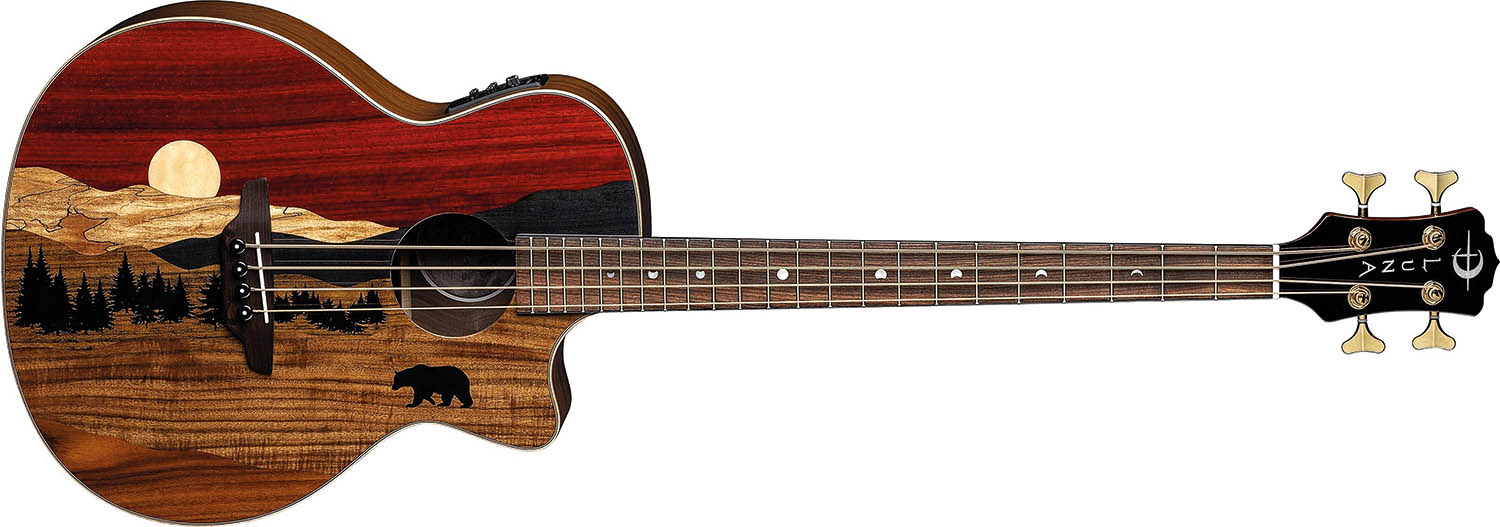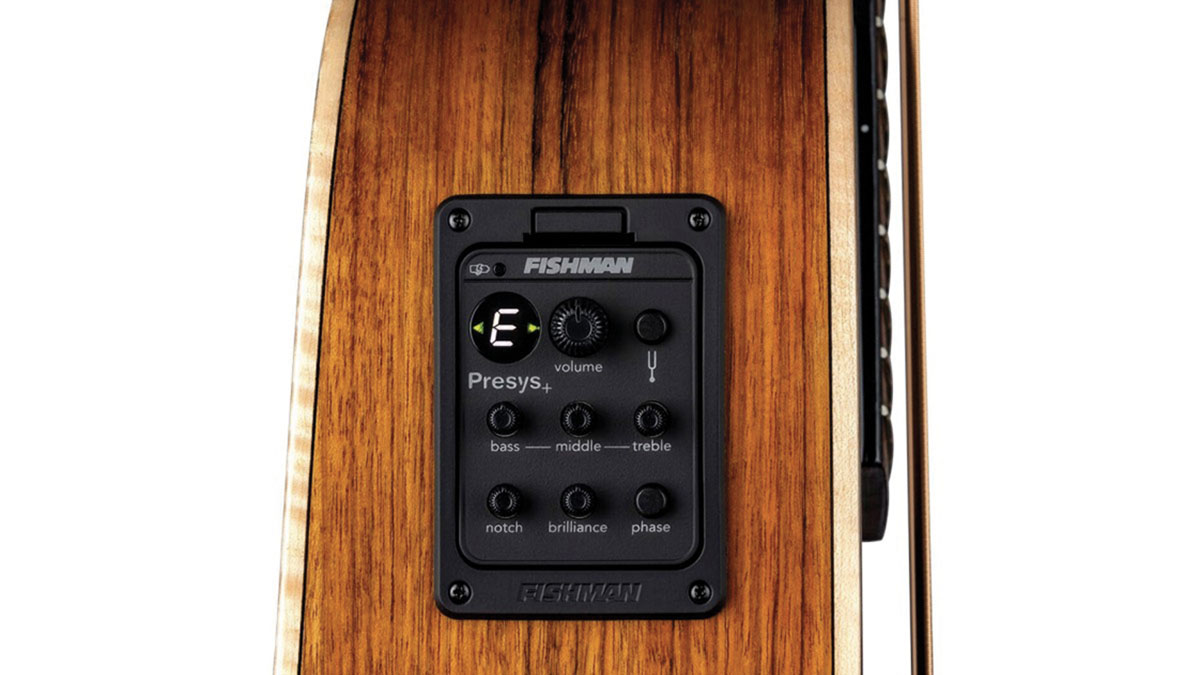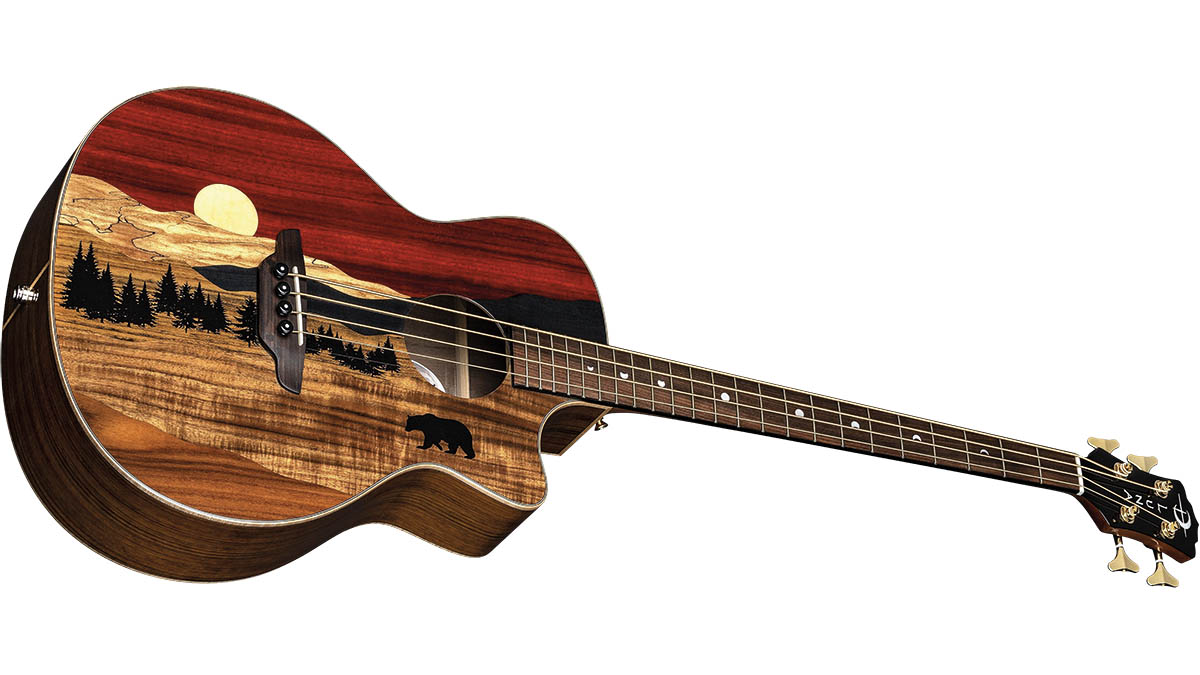Guitar World Verdict
Physically comfortable, and boasting a broad spectrum of tones, both unplugged and amplified, the Vista Bear is a joy to play.
Pros
- +
Price.
- +
Versatility.
- +
Appearance.
Cons
- -
Some low-frequency feedback.
- -
Limited sustain without amplification.
You can trust Guitar World
There is a sentiment held in certain corners of the bass world that acoustic bass guitars lack the efficiency and practicality to justify their cost, and that an electric bass guitar is more than equal to any task set before it, thus rendering its acoustic colleagues irrelevant.
We at Bass Player heartily disagree. A reliable acoustic presents a natural choice for intimate sets in small clubs or restaurants, and there’s also a considerable advantage to having an unplugged option for outdoor jam sessions where power sources are scarce.
Perhaps the greatest draw, however, lies in the innate simplicity of having an acoustic bass sitting close by for those moments of sudden inspiration, or when you feel like noodling without making a racket.
Luna’s Vista Bear bass is, without a doubt, one of the most attractive acoustic basses that we’ve ever seen. The top features a stunning mosaic of tropical woods that depict a bear heading towards the treeline as a full, pearly moon rises over the hills. Given that Luna Guitars was founded by a renowned stained-glass artist, it’s hardly a surprise that the Vista Bear boasts such a striking design. Let’s hope that it sounds as wonderful as it looks.

Build Quality
When we pull the Vista Bear out of its hardshell case, we’re immediately struck by how light it feels – so much so that we can’t help but start bashing away at it while we’re still standing, balancing the instrument on a raised leg as we run our fret hand up and down the smooth mahogany neck.
The ornate glossy top features a blend of tropical woods – padauk, quilted maple, ebony, spalted maple, ovangkol, and koa – while the back and sides consist of ovangkol, which proves a shrewd choice. Sharing many tonal properties of East Indian rosewood, ovangkol comes from West Africa and offers a bit more midrange fullness, along with a brighter treble resonance not unlike koa.
The C-shaped mahogany neck runs along a 34” scale that, with the Grand Concert Cutaway design, offers easy access to the fullest reaches of the light brown Pau Ferro fretboard. There are 21 frets with mother-of-pearl inlays depicting the various phases of the lunar cycle, with the full moon at the 12th fret.

The headstock showcases Luna’s prominent logo and design, along with gold, sealed die-cast tuners and a maple binding. Given the affordable price point and its strikingly light weight, we were initially concerned that these observations signaled the cutting of corners in the build quality department.
We’re happy to report, however, that after putting the Vista Bear through the paces and then some, it proves to be durably constructed from stem to stern.
Sounds and Playability
Unplugged, the Vista Bear delivers precisely what you would expect from an acoustic bass: warm, earthy tones, and decent sustain at the low end of the neck. Channeling our inner ‘Duck’ Dunn, we run through some blues standards, and as expected, the lower the note, the longer the sustain.
As we run up into the higher register, without the benefit of amplification, the sustain ebbs proportionately. That said, it’s a hell of a lot of fun to play unplugged.
The real magic occurs when we plug in, at which point rich and creamy tones begin flowing from both high and low registers
The real magic occurs when we plug in, at which point rich and creamy tones begin flowing from both high and low registers. This is where the instrument’s versatility takes center stage: With amplification, the Vista Bear easily handles most of what you’d expect out of an electric bass.
Much of this is down to the Fishman Presys+ preamp system located on the top side, which includes knobs for volume control and a three-band EQ for tone-sculpting options. There’s a built-in tuner with LED display as well.
Critically, the preamp additionally features Phase and Notch knobs that, in tandem, work to suppress the low frequency feedback inherent in most acoustic basses. The Vista Bear is no exception to this: Moving up the low E string, a droning buzz begins, and we’re able to eliminate the problem with the Phase knob.
For the lower frequencies, Notch allows us to scoop out the lowest range of feedback: Set at approximately two o’clock, we’re able to suppress any lingering resonance in the lowest frets.
Conclusion
The Vista Bear offers players a high-quality instrument that proves to be every bit as versatile as it is affordable.
Were it not for the robust suite of tone shaping controls in the preamp, our assessment would differ considerably, but this hybrid bass checks all the boxes with a rich, natural sound, sturdy construction, and yes, one hell of an attractive design.
Specs
- PRICE: $799 / £499
- MADE IN: China
- BODY: Padauk, quilted maple, ebony, ovangkol and koa top, ovangkol back and sides, maple binding
- NECK: Mahogany, 34” scale
- NECK JOIN: Set neck
- FINGERBOARD: Pau ferro, 21 frets
- HARDWARE: Sealed die-cast tuners, pau ferro bridge with bone saddles
- ELECTRONICS: Fishman Presys II preamp
- LEFT-HAND AVAILABLE: No
- GIGBAG/CASE SUPPLIED: Hardshell case
- CONTACT: Luna Guitars
“Affordable versions of the three best basses I've ever held in my hands”: Sterling by Music Man completes its trilogy of Joe Dart signature models with a trio of made-to-order basses that cost less than $500
“The ace up the sleeve of bass players around the globe since 1978”: Tobias instruments were trailblazers in the bass world. Now they’re back as part of the Gibson family











